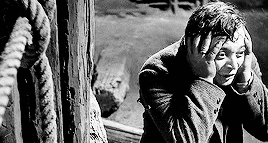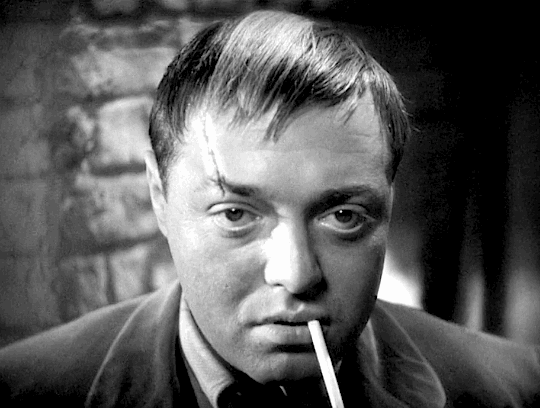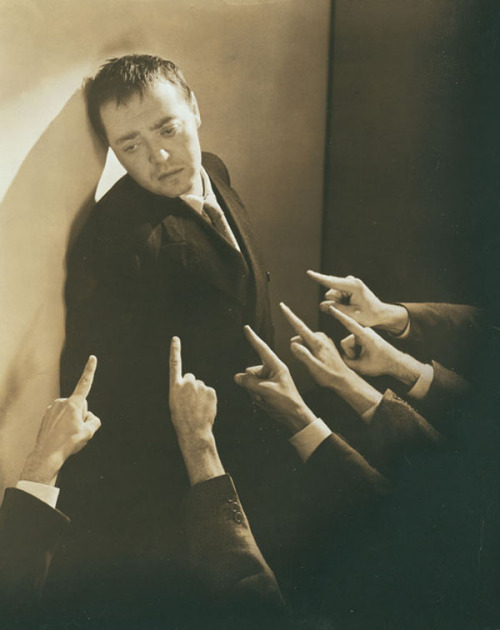Peter Lorre: the underrated villain
Aos 27 anos ele matava criancinhas.
Aos 30 tinha um penteado esquisito e sequestrou uma garota de férias em uma
estação de esqui. Aos 37 fez parte de um bando complicado que procurava uma
estátua valiosa. Aos 39 matou duas pessoas para conseguir passes para sair do
Marrocos direto para Portugal e escapar da Segunda Guerra Mundial. Aos 50 era o
assistente medroso do capitão meio maluco de um submarino. E aos 59 foi um
mágico transformado em corvo. Essas foram algumas das muitas vidas de Peter
Lorre no cinema. Baixinho (1,61m), meio gorducho, olhos esbugalhados, sotaque
inconfundível, nunca foi sequer indicado ao Oscar. Mas interpretou alguns
personagens de arrepiar os cabelos.
At 27 he killed little children. At 30 he had a weird hairdo and
kidnapped a girl from a ski station. At 37 he was part of a complicated group
chasing a valuable statuette. At 39 he killed two people in order to get a pass
to leave Morocco to Portugal and escape World War II. At 50 he was the coward
assistant to an insane submarine captain. And at 59 he was a magician turned
into a crow. These were some of the many lives Peter Lorre lived in the movies.
Short (5’ 3 1/2’’), kinda fat, bulging eyes, unmistakable accent, he was never
nominated for an Oscar. But he surely played some chill-inducing characters!
Seu papel mais famoso e de maior
destaque é sem dúvida o de protagonista de “M” (1931). A película, escrita pelo
diretor Fritz Lang com sua brilhante esposa Thea von Harbou, conta a história
de uma cidade apavorada por um assassino de crianças. Com o noticiamento dos
crimes, as crianças passam a ser proibidas de saírem na rua e o povo todo fica
em alerta. Juntam-se nessa caçada a população, a polícia e até os bandidos, que
não querem encontrar o culpado apenas para ganharem a recompensa, mas para
acabarem com a intensa vigilância da polícia na cidade toda, o que dificulta
seus “negócios”.
His most famous role is without a doubt as the leading man in “M”
(1931). The film, written by director Fritz Lang alongside his brilliant wife
Thea von Harbou, tells the story of a city haunted by a children’s murderer. As
the news about the crimes spread, children are forbidden to go outside and
everybody becomes watchful. In this hunt we have the people, the police and
even the criminals, who want to find the murderer not only because of the
reward, but also to end the police alert that is minding with their “business”.
Antes de “M”, Peter Lorre fugiu de
casa aos 17 anos, fez comédias no teatro e participou de dois filmes, um deles
sem receber créditos. Aqui, apesar de ser o protagonista, vemos primeiro sua
sombra, reconhecemo-lo pelo assobio (mas quem assobiava por trás das câmeras
era Fritz Lang) e então ele se mostra. Sua cena mais marcante é sem dúvida o
tribunal improvisado, em que Lorre arrasa na interpretação.
Before “M”, Peter Lorre ran away from home at age 17, did comedies in
theater and was in two movies, going uncredited in one of them. Here, even
though he is the lead, we see his shadow first, get to know him by his whistle
(it was actually Fritz Lang whistling behind the camera) and then we see him.
His most remarkable scene is without a doubt the improvised judgement, in which
Lorre gives a breathtaking performance.
Mas vamos a um vilão com mais
presença, e presença caricatural, devo dizer. Impressionado com “M”, Hitchcock
convidou Lorre, recém-saído da Alemanha Nazista, para seu filme “O homem que
sabia demais” (1934). Nele, uma família tem suas férias em uma estação de esqui
interrompidas quando a filha é sequestrada. O sequestrador? Lorre, com uma
mecha branca no cabelo que o faz parecer um gambá. O motivo do sequestro? A
mãe, Jill Lawrence (Edna Best) presenciou um assassinato e ficou conhecendo
detalhes sobre uma conspiração.
Now we’ll talk about a villain with a caricatural presence. Impressed by
“M”, Hitchcock invited Lorre, who had just fled Nazi Germany, to do appear in
his movie “The Man who Knew Too Much” (1934). In it, a family on vacation in a
ski station finds trouble when the daughter is kidnapped. Who is the kidnapper?
Lorre, with a white lock of hair that makes he look like a skunk. The reason
for kidnapping the girl? The girl’s mother, Jill Lawrence (Edna Best) witnessed
a murder and heard details about a conspiracy.
Lorre ainda
não era fluente em inglês quando filmou “O homem que sabia demais”, e aprendeu suas falas foneticamente
(embora algumas fontes afirmem que ele teve três meses para dominar a língua
antes de começar a filmar). Mas isso não importa: Abbott, seu personagem, é o
mais memorável do filme. Além do cabelo de gambá, ele tem uma cicatriz bem
acima do olho direito. Lorre foi às pressas para a cerimônia de seu primeiro
casamento, com a atriz Celia Lovsky, sem tirar a maquiagem de Abbott!
Lorre was not yet fluent in English when he shot “The Man who Knew Too
Much”, and he learned his lines phonetically (although some sources claim that
he was given three months to learn English before the shoot started). But this
doesn’t matter: his character, Abbott, is the most memorable in the film.
Besides the skunk hair, he has a scar right above his right eye. Lorre went
running to his first wedding, to actress Celia Lovsky, without removing his
makeup!
| Querida, cheguei! / Honey, I'm here! |
Os fãs mais comprometidos de
Hitchcock dizem que a versão de 1934 é melhor que seu remake, também dirigido
por Hitchcock em 1956. Eu tenho de concordar, e grande parte dessa
superioridade se deve à presença de Peter Lorre como vilão. Ele inclusive
participa daquela que considero a melhor briga do cinema, envolvendo cadeiras
voadoras em uma pequena igreja. O casal de sequestradores do garotinho no filme
de 1956 não parece de todo perigoso, e nem sequer deixa sua marca de maldade.
Outro ponto positivo da versão original é que Jill é a grande heroína. Embora
Doris Day cante “Que Sera, Sera” e grite para evitar uma tragédia em 1956, a
Jill de Edna Best é mais independente, e usa com sangue frio sua habilidade com
armas.
The most hardcore Hitchcock fans say that the 1934 version is better
than the remake, also directed by Hitchcock in 1956. I have to agree with them,
and a lot of what makesi t superior is Lorre’s presence as the villain. He even
takes part in what I consider to be the best fight in film history, involving
flying chairs inside a small church. The couple that kidnaps the little boy in
the 1956 film doesn’t look as dangerous as Lorre alone was. Another positive
point in the original version is that Jill is the hero. Although Doris Day sang
“Que Sera, Sera” and screamed to avoid a tragedy in 1956, Jill, as played by
Edna Best, is more independent, and is not afraid to use her gun.
O sucesso de Lorre nestes dois filmes
foi estrondoso. Ele voltou a trabalhar com Hitchcock em “Agente Secreto”, de
1936, mas então já estava estereotipado: em Hollywood se tornou o vilão
estranho, o maníaco que mora ao lado, o pária da sociedade. Lutou a vida toda contra
um vício em morfina, adquirido após complicações de uma cirurgia em 1927. Mesmo
assim, ele conquistou admiradores: em um anúncio para seu primeiro filme
americano, “Mad Love” (1935), ele é descrito como o melhor ator da época por
ninguém mais, ninguém menos que Charles Chaplin.
Lorre’s success in these two films was huge. He worked again with
Hitchcock in “Secret Agent” (1936), but by then he was already stereotyped: in
Hollywood he became the strange villain, the maniac next door, the pariah. He
fought during his whole life against an addiction to morphine that started
after a complicated surgery in 1927. But this didn’t stop him from getting
admirers: in an add for his first American film, “Mad Love” (1935), he is
described as the best actor of his time by none other than Charles Chaplin.
Apesar de parcerias bem-sucedidas com
Sidney Greenstreet e Humphrey Bogart (Peter inclusive convenceu Bogie a se
casar com Lauren Bacall!), sua carreira sofreu com seu ganho rápido de peso
depois dos 50 anos, quando enfrentava um problema glandular. Mas isso não deixou
Lorre esquecido! Porque, para pessoas como eu, que preferem os vilões, Peter
Lorre merece um lugar de honra no Hall da Fama do cinema mundial.
Although he had successful partnershps with Sydney Greenstreet and
Humphrey Bogart (Peter even convinced Bogie to marry Lauren Bacall!), his
career suffered as he gained weight quickly after turning 50, when he faced a
glandular issue. But this hasn’t made him a forgotten actor! Because, for
people like me, who prefer the villains, Peter Lorre deserves a place of honor
in the world cinema Hall of Fame.




Adoro os personagens de Peter,nunca com a mesma característica,apesar de a grande maioria ser vilão,mas as personalidades sempre diferente nunca a mesma.
ReplyDeleteAdorei o post Lê ficou fantástico.
Beijos e Boa Páscoa!
http://pinagirlscris.blogspot.com
sempre adorei. beijos, pedrita
ReplyDeleteI greatly enjoyed your write-up. I've seen the 1951 version of M, directed by Joseph Losey, but not this one, which, from your description, seems much creepier! I will definitely have to give this one a look-see. Good stuff!
ReplyDeletewell done, nice bio details and I agree, Lorre could be lovable which is what makes him really disturbing when he's evil. I've seen the movies you write about here and he does a fantastic job in them. thanks for being part of this event :)
ReplyDeleteHe's such a great villain, and "The Man Who Knew Too Much" is clearly, one of his best. It's not just the scar, or that strange white streak in his hair. It's Lorre himself, and that glint in his eye that says" look out!, I might come and get you next." What a villain.
ReplyDeleteI once saw a film that Lorre directed, called 'Der Verlorene,' which means 'The Lost One.' It's German, but the print I saw had crappy subtitles, so I couldn't tell you a great deal about it. It looked not unlike his American crime/noir films.
ReplyDeleteI had been looking forward to reading your post after the James Stewart blogathon! I think this is where my problem with the first version of The Man Who Knew Too Much is, Lorre is just too good - and I can't possibly prefer a film just for the villain ;)
ReplyDeleteHe has a lot of other great roles too (I recently re-watched The Maltese Falcon), and I think he's one of my favourite 'character' villains, it's just a shame he couldn't seem to break the typecast!
Peter Lorre is such a great actor, and you've pointed out the variety of films in which he's appeared. He's believable in all those roles.
ReplyDeleteThanks for participating in the blogathon and for profiling the great Peter Lorre! :)
Peter Lorre is such a great actor, and you've pointed out the variety of films in which he's appeared. He's believable in all those roles.
ReplyDeleteThanks for participating in the blogathon and for profiling the great Peter Lorre! :)
Ótima postagem, realmente Peter Lorre foi um dos grandes vilões do cinema, ator que sempre colocava pitadas de comédia e ironia em seus personagens.
ReplyDeleteVale destacar ainda os filmes com Vincent Price no final da carreira. São muito divertidos "Farsa Trágica", "O Corvo" e "Muralhas do Pavor".
Bjos e uma ótima semana.
I love that you mentioned "Comedy of Terrors". Peter Lorre is the funniest crow of all time!
ReplyDeleteYou wrote most feelingly about Lorre and his career. He is certainly deserving of all the praise.
Peter Lorre was a brilliant character actor, and as a villain he could be frighteningly charming, creepy and cute. He was perfect for Hitchcock. Thanks for this post. It's so rare to get to compare a film that a director creates two versions of. A Peter Lorre film is always worth watching.
ReplyDeleteEle tem um rosto muito marcante, né? Acho que coube bem nos personagens de Hitchcock!
ReplyDeleteAgora, até hoje não assisti M... que vergonha. Vou subir ele na minha lista, haha!
Beijo!
Adorei o post! M é um clássico do cinema e o Peter um ícone :)
ReplyDeleteBeijos <3
Oi, Letícia
ReplyDeleteMe desculpe por ter sumido por tanto tempo, ok?
Estou aos poucos tentando colocar minha vida nos eixos novamente.
Apesar de não ser fã do Peter, amo O Homem Que Sabia Demais. E concordo que seja melhor que a segunda versão. Demais.
Um abraço
Dani
Le, I've been looking forward to your blog post about Peter Lorre at last (so many bloggers to catch up with! :-)), and now that I've caught up with it, it was well worth the wait! Lorre may have made his early mark as the the child-killer of "M", but we've enjoyed many of Lorre's roles, including comedy like ALL THROUGH THE NIGHT, COMEDY OF TERRORS, SILK STOCKINGS, and so much more! Peter would be proud of your excellent salute to him! Great job, my friend!
ReplyDeleteGreat post. And if you haven't seen him in Mad Love, I highly suggest you seek that out too-- he's completely nuts in it!
ReplyDeleteGostei muito dele em M - O vampiro de Dusseldorf, que é com certeza seu filme mais famoso.
ReplyDeleteAbraços
Such a fan of Lorre's. Thanks for such a great post on him! Leah
ReplyDeletePeter Lorre foi o melhor ator de todos, mas um dos ou o mais injustiçado. Nunca ter recebido um indicação ao oscar é um absurdo. Era tão bom ator que numa cena de uma peça onde ele perseguia alguém com uma faca, a plateia e até mesmo os outros atores gritaram para ele parar, de tão convincente que ele estava. Quando ele foi para uma entrevista com Hitchcock, ele sabia quase nada de inglês, mas sabia que Hitch gostava de contar histórias e ele fingiu que entedia o que o diretor dizia e ria nos momentos certos, então Hitchcock achou que ele sabia inglês e o contratou.
ReplyDeleteSão tantas interpretações maravilhosas:
M;
O Homem dos Olhos Esbugalhados,(Stranger on the Third Floor);
Três Desconhecidos,(Three Strangers);
Crime e Castigo,(Crime and Punishment);
Relíquia Macabra, (The Maltese Falcon);
Mendigo Milionário, (I'll Give a Million);
Epara mim a melhor de todas em Supremo Sacrifício (Crack Up).